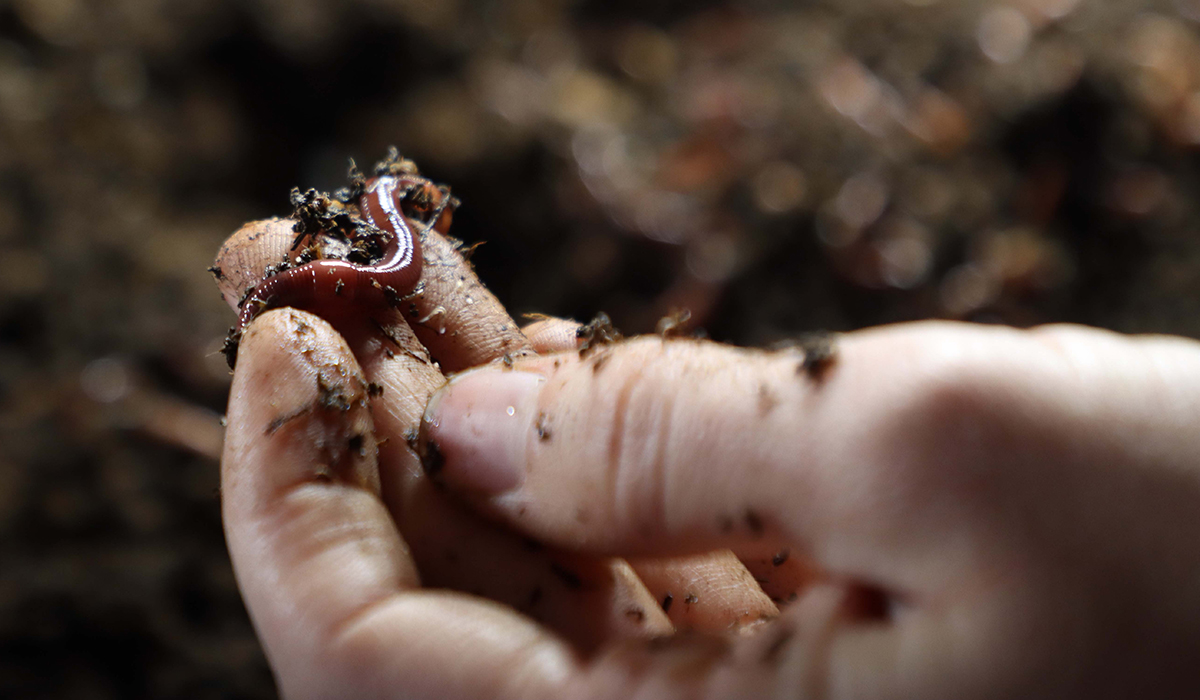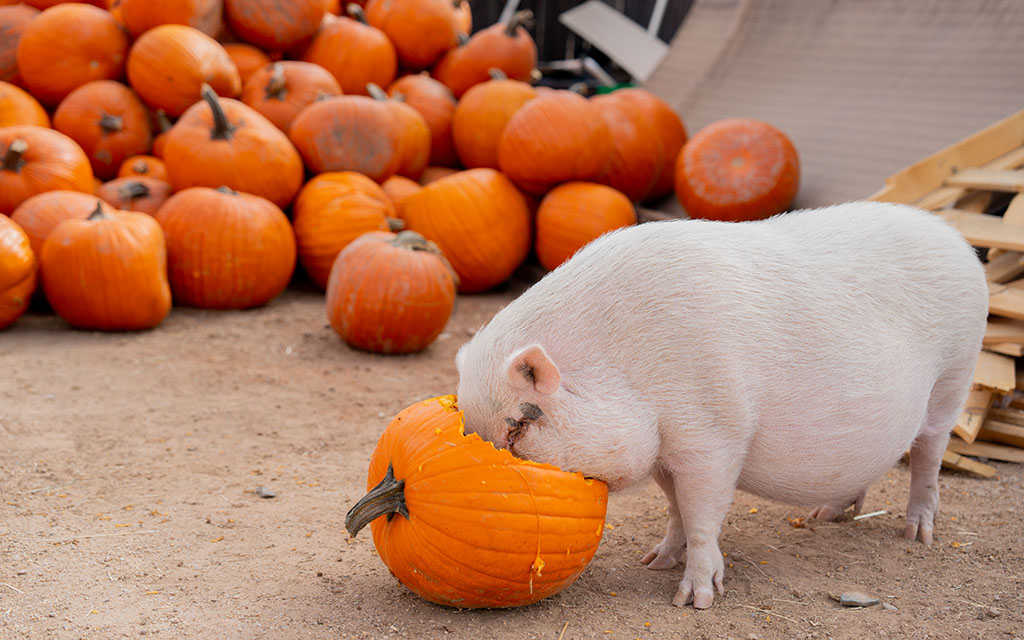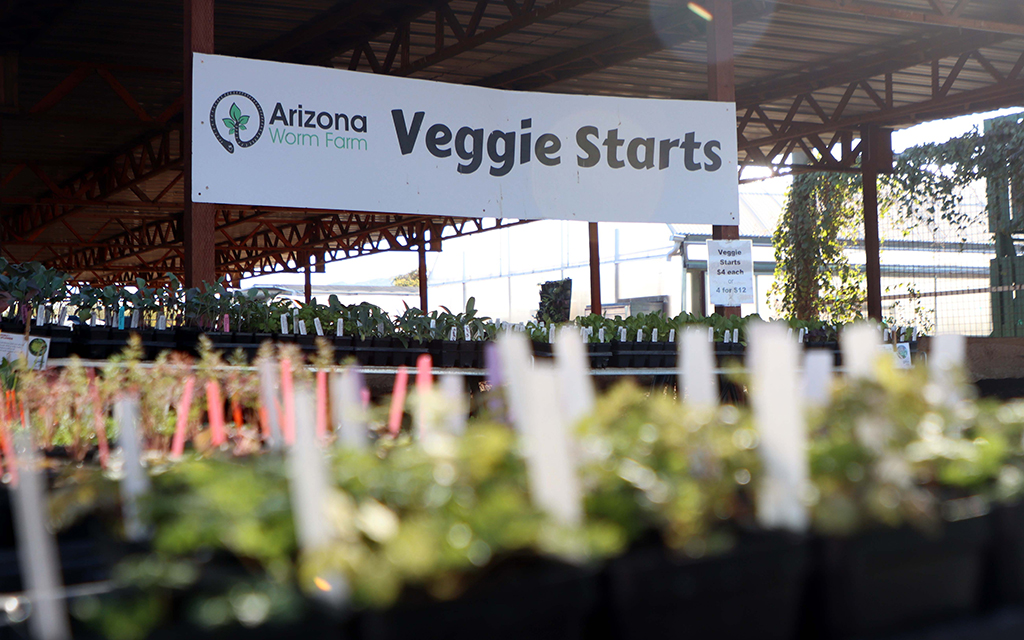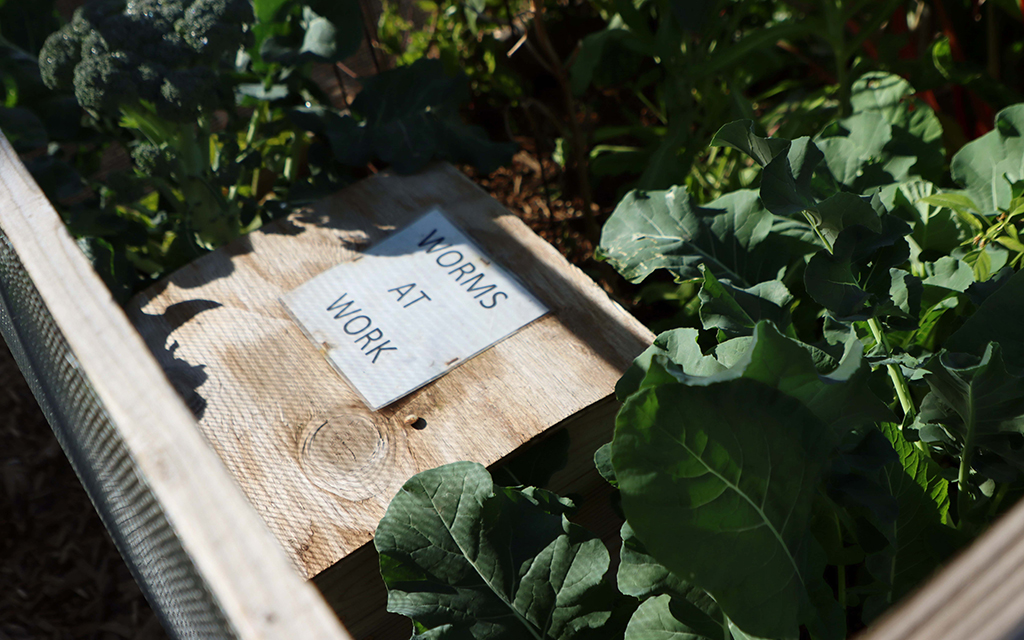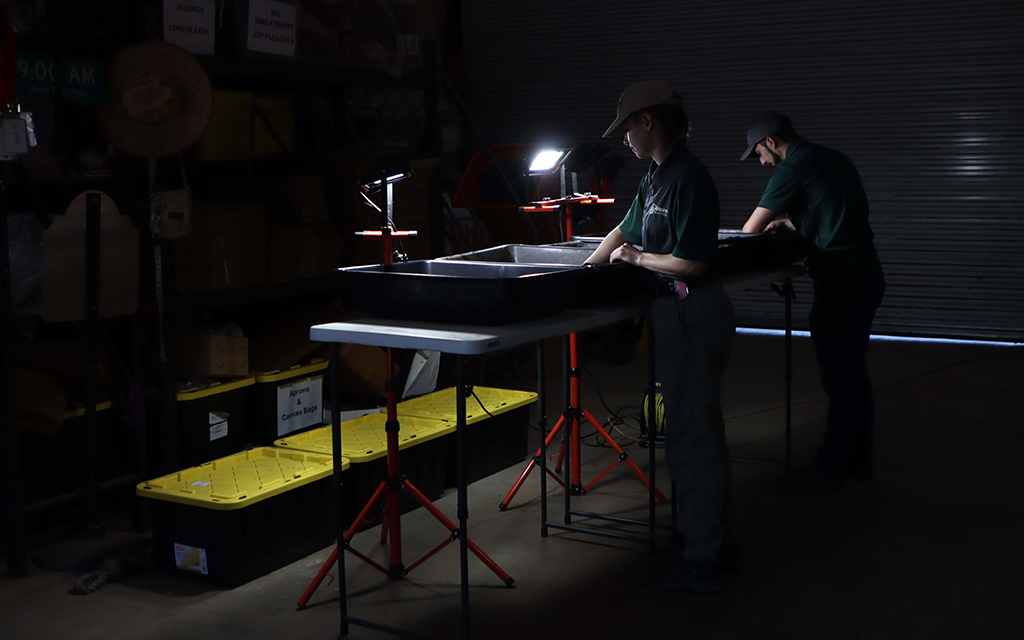PHOENIX – Vv Acevedo reaches into one of the dirt piles that line the Arizona Worm Farm and pulls out a handful of dirt. It’s full of squirming worms buried just beneath the surface.
Located near South Mountain, the farm breeds red wiggler worms for vermicomposting, which is the process of using worms to break down food waste into nutrient-rich soil that fertilizes plants.
“As your plants are growing, they’re putting all of that energy and nutrients into the leaves and the fruit and everything that falls,” said Acevedo, director of education at the farm. “It doesn’t have a way of returning back into the soil. That’s where the worms come in. They will help break all that down and return those nutrients into the soil.”
The farm is working to combat food waste with its vermicomposting efforts, selling worms to promote commercial and backyard vermicomposting, and educating consumers and businesses about the process.
Food waste is any food that gets thrown away, wastes resources, adds to landfills and increases environmental impact through methane gas production.
The U.S. Department of Agriculture’s website defines food waste as “the edible amount of food, postharvest, that is available for human consumption but is not consumed for any reason.”
Food waste is a huge problem. Each year, 119 billion pounds of food is wasted in the U.S. with nearly 40% of all food in America wasted, according to Feeding America, a nonprofit that addresses hunger.
The Arizona Worm Farm started in 2017 and is halfway through a 10-year plan to create a self-sustaining, zero-waste environment with a focus on vermicomposting. The farm works with a number of businesses to collect food waste and dispose of it in a more sustainable way.
“We get green waste from salad producers that don’t put them in those bags that go in your grocery store, we get horse manure from carefully curated stables, and we get ground landscape waste from the city of Phoenix from a landfill diversion program,” said Zach Brooks, owner of the Arizona Worm Farm. “If we bury it (garbage) in a hole, we don’t make use of that. If we take it and capture that resource … we can continue to use that resource to feed ourselves.”
While vermicomposting recaptures nutrients from food waste and uses them to grow new plants, the process also recaptures water in the food that allows it to grow. That is especially important in Arizona during a megadrought.
The Arizona Worm Farm uses a no-till method, meaning no chemicals, herbicides, pesticides or commercial fertilizer can be used. The farm uses only worm castings – or excrement – which produce microbial activity.
“Those microbes convert what’s in the compost into what the plants need at the exact time that the plants need it,” Brooks said.
The farm receives 320 cubic yards of food waste from partners each week. Workers layer that in a custom mix, wet it, turn it and monitor it for six months until it is ready to sell to businesses and backyard gardens.
Businesses can enroll in programs that pick up their food waste and have it taken to a composting facility, like the worm farm, instead of throwing it in with other waste and paying to have it hauled to a landfill.
Individuals have a few options to participate in vermicomposting and repurposing their food waste. They can start bin-sized operations where they throw food scraps in with worms and let the wrigglers do their job.
“Our main goal is to get more people backyard gardening, more people using natural things in their garden as an alternative to chemical fertilizers,” said Sarah Spainhower, head worm breeder at the farm.
Another option for backyard gardeners is to take their food waste and worms and add them directly to their garden. The worms digest the food waste and produce castings, which provide nutrients to the garden. The castings cultivate slower, healthier organic growth and lead to more delicious fruits and vegetables, according to Brooks.
Vermicomposting can take place in a raised bed or garden. People can add fruits, vegetables or leftover food and cover that with an inch of fallen leaves and water, and the worms will take care of the rest.
“Compost, worms and castings operate at the root level. So they’re feeding your plants without doing anything to burn your plants,” Brooks said. “They won’t over fertilize them, and they don’t pollute our waterways.”
